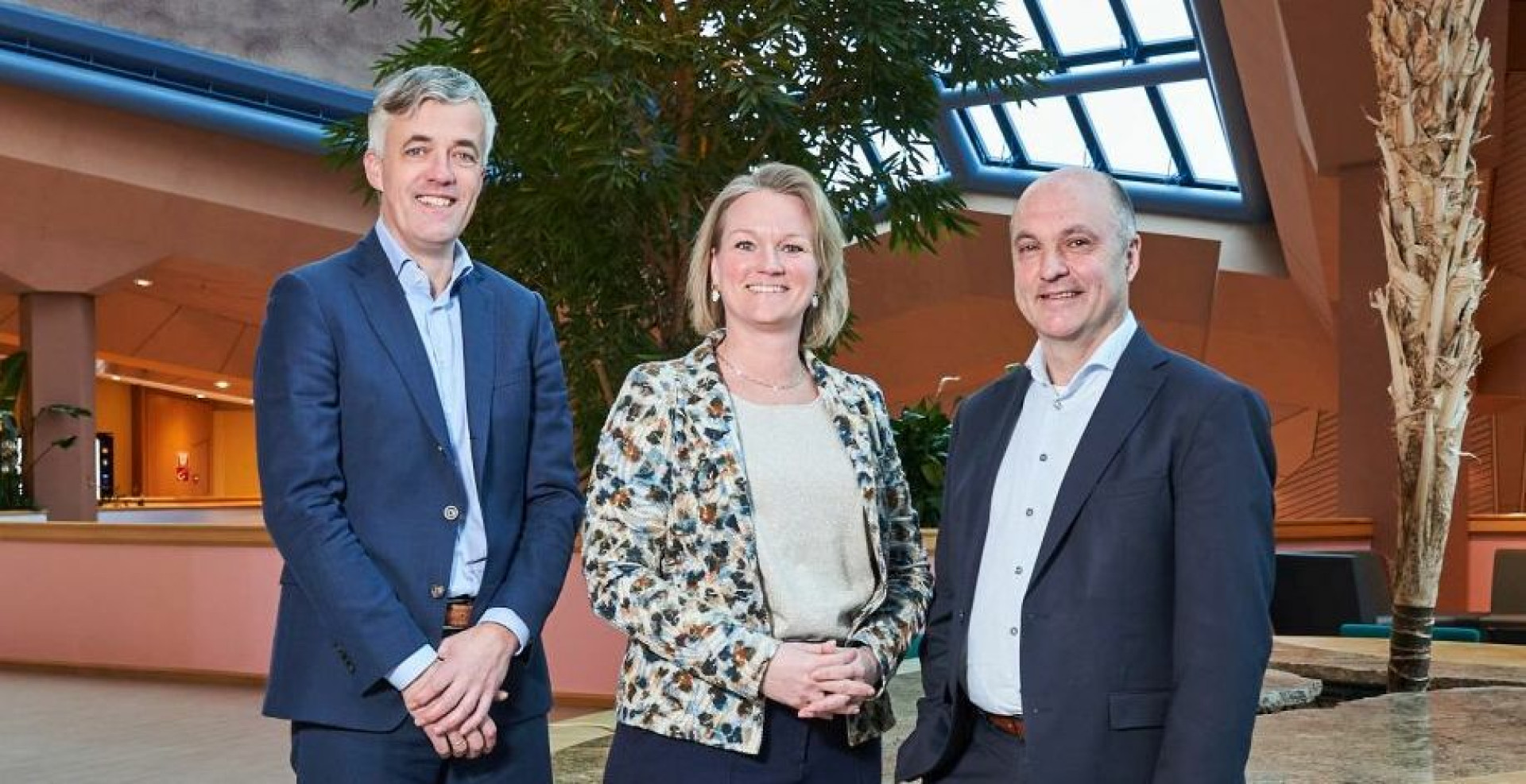Foreword by the Executive Board
Foreword by the Executive Board
Accelerating after a pivotal year
After an unprecedentedly turbulent year in 2022, volumes and prices on the gas market stabilised in 2023. At Gasunie we are proud of the role we have been able to play in this. Thanks to rapid capacity building, our LNG terminals Gate and EemsEnergyTerminal were able to welcome a record number of LNG tankers in 2023, supporting the availability and, with this, the affordability of natural gas for the north-western European economy. Together with our partner Vopak, we will be working on further capacity expansions in 2024, thus enabling the further reduction of the already greatly reduced dependence on Russian gas.
The year 2023 was a pivotal one for the Gasunie of the future. It was a year in which we made investment decisions for the first large-scale carbon transport and storage (CCS) system and for the first part of the national hydrogen transmission network. These projects are crucial for the energy transition and for Gasunie’s direction moving forward. After years of preparation, we can finally break ground. The people and the materials are already in place. After all, we have no time to lose if we want to achieve the national and European climate targets.
We want to accelerate our activities in the coming years. We will make investment decisions for more and larger transport and storage projects for CO2 and hydrogen. After Porthos it’s Aramis’ turn, a project that will enable the storage of ten times more CO2 from 2028. And after the Rotterdam-Tweede Maasvlakte section of the hydrogen grid, regional connections will follow in the north and other parts of the Netherlands, which will together form the Dutch national hydrogen transmission network from 2027. The design of the German national ‘hydrogen core network’, in which we are also participating, is almost ready.
Scaling up and making preparations
Gasunie is rapidly developing from a gas transmission system operator to an energy infrastructure company. To realise our ambitions in the field of CO2, hydrogen, heat and green gas, our workforce (in FTEs) increased by nearly 12% in 2023. In addition, we have spent a lot of time within the group over the past year preparing our organisation for working with various forms of energy.
For us, the energy transition and ensuring transmission security means working hard under demanding time constraints. We are now learning to deal with this better. Though we are relieved to see that the relative increase in the number of occupational accidents came to a halt in 2023, we are very concerned to see that we are still above the target figure we have set for ourselves. Gasunie management will give its utmost attention to safety in 2024. After all, everyone who works for Gasunie must be able to return home safe and sound at the end of the day.
Social return
When making investment decisions, we increasingly focus on social returns. For Gasunie, as the company stands today, making a profit is no longer a goal in itself, but a condition for realising projects with a high social dividend. If we only thought in terms of financial returns, we would have rejected certain investment projects.
When planning energy transition projects, at Gasunie we increasingly approach our considerations from the perspective of ‘broad prosperity’. This means that we occasionally also invest in projects that are less profitable financially, but that have added value for society in a broader sense. In this annual report we have also included our first social impact report, in preparation for a future in which we will be judged on our ‘integrated payout ratio’: the sum of our financial dividend, our environmental dividend and our social dividend.
The future is certain/The future is uncertain
At the time of publication of our annual report, it was not yet clear which government the Netherlands would have and what policy it would aim to implement over the coming years. This could have an effect on the financeability of our energy transition plans. On the other hand, the Netherlands has committed itself to international climate treaties and to the targets agreed in these, and the ball is not only in the politicians’ court: citizens and businesses also have a say. Whether the ball goes left or right, the energy transition will go ahead, one way or the other. In a mere 26 years’ time, we should be living in a net carbon-neutral economy.
The transition projects we are already working on deliver good social returns in all scenarios, as can be seen in the future scenario study II3050, which the Dutch grid operators carried out for the second time last year. We have a promising portfolio of projects ready to move into the construction phase or ‘in the pipeline’ that can contribute to the energy transition, and we have relatively few obstacles in terms of capacity, people and materials.
All parties involved will need a lot of courage and perseverance to see through all the new endeavours while also paying sufficient attention to what’s already there. This is not something that happens just like that. Gasunie is handling its share of the transition with money and resources, but especially with enthusiastic people with the right expertise. We are grateful that, together with these people, we can walk along the pathway to a fossil-free future.
Janneke Hermes, Bart Jan Hoevers and Hans Coenen

